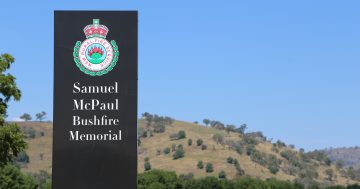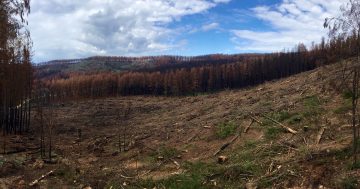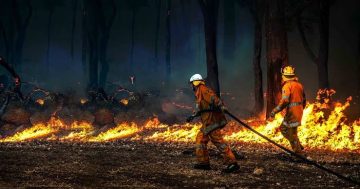
A recent Bombala camp saw 46 Forestry Corporation participants gain and further their national firefighting accreditation. Photo: Forestry Corporation.
Forestry Corporation has added 96 new recruits to its firefighting roster this year after a series of training camps, as NSW prepares to mark the fifth anniversary of the Black Summer bushfires.
As one of the state’s four firefighting authorities, Forestry Corporation manages more than two million hectares of state forests and will have more than 500 firefighters rostered on for fire response this summer.
The agency said since the 2019-2020 fires, it had increased its firefighting ranks and upgraded its fleet, with staff bolstering their experience on NSW firefronts while lending support and experience on interstate and international firefighting deployments.
The corporation each year stages fire camps across regional NSW where staff train and upskill on new and existing fireground equipment and appliances.
Fire camps have been staged at Mount Seaview, west of Wauchope and Wallerawang near Bathurst and most recently at the Bondi Forest Lodge near Bombala.
Fire Training and Operations Officer Adrien Thompson said the recent Bombala camp saw 46 candidates gain and further their national firefighting accreditation.
“The camp was a huge success culminating with a live fire day out in the forest complete with a dozer undertaking containment works and a fire forwarder [a logging machine modified to carry a water tank and firefighting equipment] onsite mopping up after backburns and response activities,” Mr Thompson said.
“We also had one of Forestry Corporation’s contracted helicopters on-site during the week for our Work Safely around Aircraft training,” he added.
Senior Manager Fire and Natural Hazards Rebel Talbert said Forestry Corporation of NSW worked collaboratively with the other agencies – NSW Rural Fire Service, Fire and Rescue NSW and NSW National Parks and Wildlife Service – to protect communities, the environment and the state’s essential timber assets from the risk of fire.
“We are well prepared heading into the fire season with a skilled workforce, a fleet of equipment, drones and heavy plant ready to deploy to aid rapid response, detection and suppression of fires,” Ms Talbert said.
“Our statewide fleet includes fire tankers, light vehicles fitted with fire-fighting gear, heavy plant machinery, contracted aircraft and over 100 drones and trained pilots,” she said.
“Heavy plant machinery like bulldozers, used in forest operations in state forests, are also made available by the broader forest industry to fight fires in NSW.”
She said a major multi-year program was also currently underway to upgrade Forestry Corporation’s firefighting fleet and improve safety for their firefighters.
In response to a recommendation of the independent NSW Bushfire Inquiry, burn-over compressed air foam system (CAFS) protection systems are being retrofitted to all existing light firefighting fleet and installed standard on new vehicles.
In addition, new fire tankers are being purchased to replace ageing vehicles.
“As a statutory firefighting authority supporting community firefighting efforts across the landscape, it is vital that we maintain safe and efficient fleet and equipment and investments in our fleet will further enhance efforts made in recent years to improve the safety, efficiency and effectiveness of our fleet,” Ms Talbert said.
Forestry Corporation also took receipt of the first batch of new dual cab ‘Category 1’ fire tankers last year which are based at Grafton, Bathurst and Tumut and have been deployed to firegrounds multiple times over the past and current fire seasons.
The latest generation fire tankers carry 3500 litres of water and have front-mounted water cannon and thermal cameras that can be controlled from within the cabin.
Built by the NSW Rural Fire Service, the tankers feature all the latest safety and firefighting equipment and have been well received by Forestry Corporation firefighters.
The Snowy Valleys region’s softwood timber industry – home to Australia’s most significant timber plantation – was severely impacted by the devastating fires with around 50 per cent of the pine plantations destroyed.
As a result Forestry Corporation immediately accelerated planting over the 2021-26 period to make up for the losses.
















